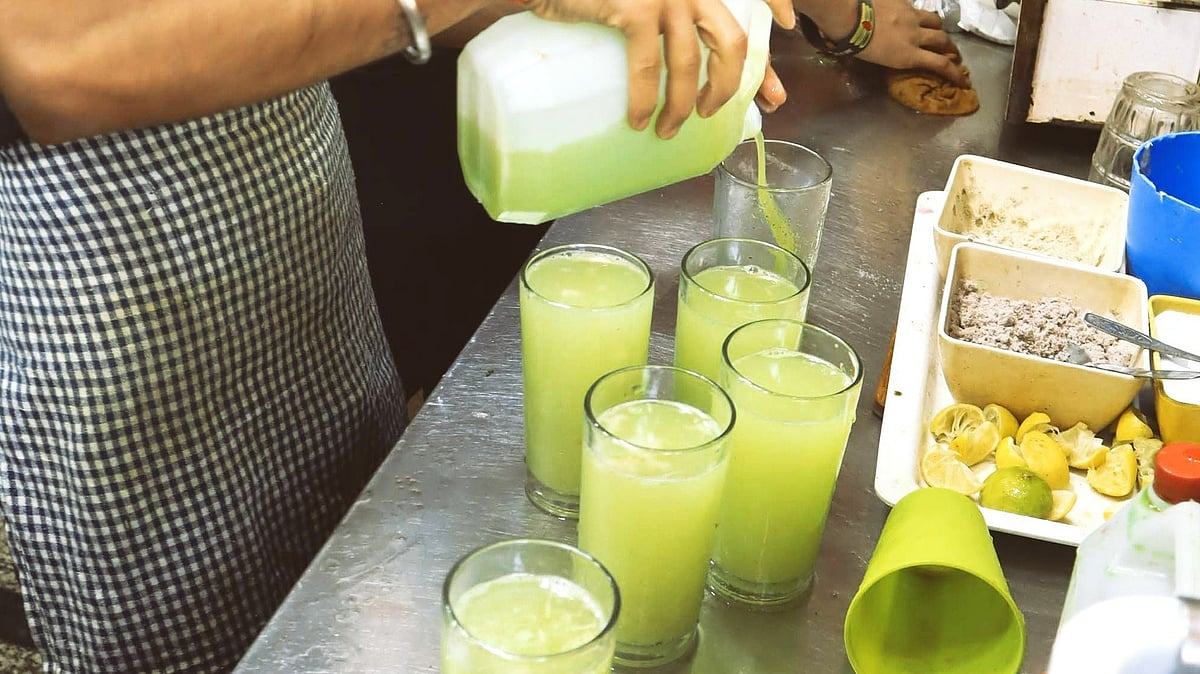Punekars, Beware: Contaminated Ice In Your Cold Drinks Could Be Dangerous— Here’s How To Identify Pure Ice!

**Contaminated Ice in Cold Drinks: A Hidden Health Hazard as Summer Temperatures Soar**
As summer intensifies and temperatures soar beyond 40°C, residents are flocking to juice centers and roadside stalls in search of refreshing drinks. However, health experts warn of hidden dangers lurking in these cold beverages—specifically, the ice used in them. Reports reveal that many vendors are using industrial-grade ice made from contaminated water, which is not meant for consumption.
### The Growing Concern Over Contaminated Ice
Every summer, the issue of tainted ice—often referred to as “blue ice”—resurfaces. Research indicates that many roadside stands and juice bars unknowingly use inedible ice to chill their beverages. This ice, usually intended for industrial cooling rather than consumption, is affordable and easily available, leading vendors to handle it carelessly.
Unlike pure, edible ice made from filtered water, industrial ice may contain hazardous chemicals, including ammonia. Consumption of such ice raises the risk of diarrhea, throat infections, stomach ailments, and other serious health issues.
While people are usually cautious about the water they drink, cold drinks often contain ice sourced from various parts of the city, making it difficult to trace its purity. This oversight can have severe health implications.
### Recent Health Outbreaks and Local Concerns
Just days ago, Pune experienced a dangerous outbreak of Guillain-Barré Syndrome linked to impure water. In response, residents were advised to boil their water before consumption. However, concerns over the safety of ice used in beverages remain unaddressed.
Rahul Bappu Ghule, owner of an ice factory in Nanded, shared his perspective:
“Our factory produces up to 50 tons of ice and we supply it across Pune City. We use PMC water to ensure high-quality ice, which we also transport to Mumbai and Alibag during monsoons. The issue is that while we produce good-quality, edible ice, industrial ice is being sold at a lower price. This cheaper ice is preferred by many street vendors due to the lack of clear directives from the FDA.”
### Popular Summer Treats and Their Risks
Among several ice-based treats popular in Pune, ice gola remains the top choice. Dr. Ujjwala Keskar, Pediatrics and Child Care Specialist at Manipal Hospital in Baner, emphasized the health risks associated with these delicacies. She noted:
“The ice used contains germs and bacteria such as Escherichia coli and Salmonella. Cases of typhoid, diarrhea, and jaundice have risen due to the consumption of inedible ice. Additionally, ice candies and cold beverages pose risks, especially to children, as they are calorie-dense but offer no nutritional value. This can lead to unnecessary weight gain and suppress appetite.”
Dr. Keskar also remarked on the dangers posed by sudden temperature changes while standing or walking in scorching heat, making the consumption of contaminated ice even more harmful. She stressed that the quality of ice and sugar used in these treats cannot be trusted.
### FDA Launches Inspection Drive
In light of these concerns, the Food and Drug Administration (FDA) has taken steps to address the issue. Shivkumar Kodgire, acting Joint Commissioner of the FDA, stated:
“We have issued circulars regarding the sale of edible ice and urged consumers to exercise caution. Our officials are conducting surprise inspections at ice factories and beverage vendors. Samples have been collected and sent to laboratories for quality analysis. We intensify these inspections during summer, especially at juice centers and roadside stalls.”
### How to Identify Pure Ice
Consumers can differentiate edible ice from industrial ice by color and appearance:
– **Edible ice**: Typically pure white and made from filtered water.
– **Non-edible industrial ice**: Often has a blue tint, used to distinguish it from food-grade ice.
However, this distinction is not always observed, increasing the likelihood of contaminated ice entering the food chain.
—
As temperatures continue to rise, it is crucial for both vendors and consumers to remain vigilant about the quality of ice used in cold beverages. Choosing edible ice and supporting proper regulatory measures can significantly reduce health risks during the scorching summer months.
https://www.freepressjournal.in/pune/punekars-beware-contaminated-ice-in-your-cold-drinks-could-be-dangerous-heres-how-to-identify-pure-ice








